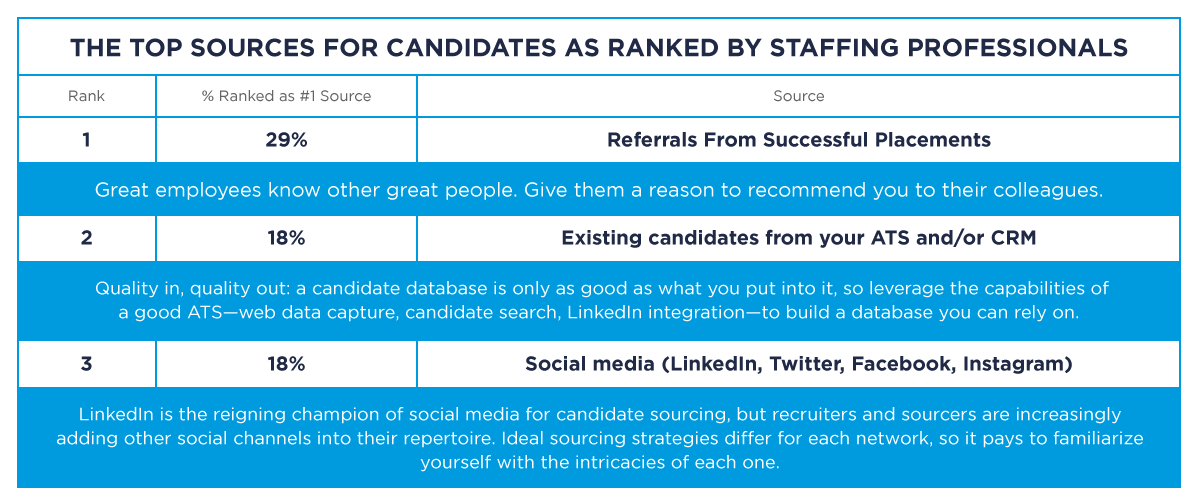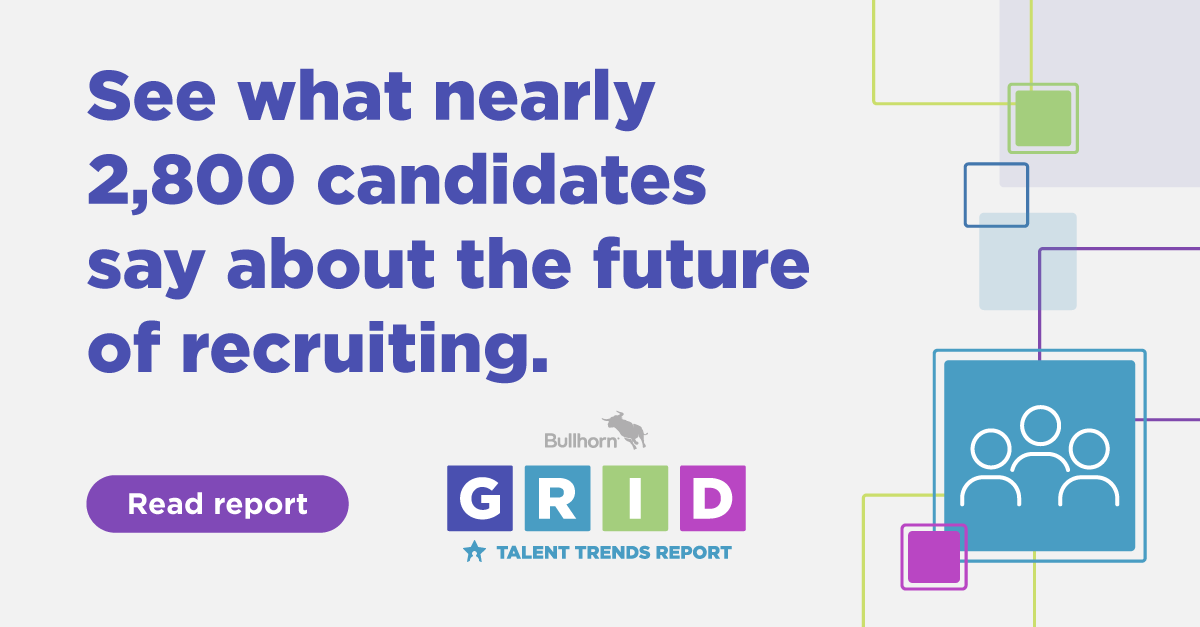Tips to Find and Place In-Demand Talent

Sourcing during a skills shortage may feel like an impossible task, but with the right approach, you can improve your sourcing results for even the toughest roles. In this new weekly blog series, you’ll find relevant stats and tips for industries where talent is often high in demand but short on supply, like manufacturing, tech, and business services. Next week, we’ll cover strategies, stats, and tips for healthcare roles. First up, a primer on candidate sourcing and the talent shortage.

Candidate sourcing: a top priority for you AND for your clients
Candidate sourcing—defined here as the proactive search for and initial engagement of candidates for a role—is one of the first and most vital components of talent acquisition. Without quality candidates, your candidate placement engine can’t run. And that engine is critical for meeting the hiring needs of your clients, generating business, and ultimately, remaining profitable as an agency.
It’s easy to see why 41 percent of recruiting professionals say candidate acquisition is one of their three biggest priorities.
It also tops the wishlist of your clients: recruiting clients say the single biggest thing providers can do to improve their service is to provide better-qualified candidates.
Unfortunately, with an increased demand for candidates and fierce competition, sourcing quality candidates isn’t an easy task. But what’s the most cited sourcing obstacle? The talent shortage.

The talent shortage isn’t going anywhere
The talent shortage isn’t a new challenge for recruitment agencies, but it may be the biggest one. Forty-six percent of surveyed recruiting professionals cite it as the single-biggest challenge for 2018, and another 71 percent cited it as a top-three challenge. It was also a top challenge the last several years, ahead of other major concerns like pricing pressures and global economic uncertainty. If you’re in the recruitment business, you’re probably grappling with the shortage in one way or another.
The bad news? The talent crunch might get worse before it gets better. Seventy-two percent of recruitment pros expect hiring needs to increase in 2018. Your unique client base is a factor, but recruiting professionals in every industry expect an increase in hiring needs. An increase in demand is great for your business, but it only amplifies the need to find and place high-quality candidates.
Which sources generate the most qualified candidates?
All candidates are not created equal, and neither are the sources you use to find them. Recruitment professionals ranked the most effective candidate sources for the 2018 Australian Recruitment Trends Report. These are the top results for sourcing candidates across all industries. Come back each week to see the top sources for verticals like Healthcare and Tech.

Industry-Specific Tips to Source Candidates
Each week, we’ll explore a different vertical—Healthcare, Industrial/Manufacturing, Tech, Business Services, and Finance—impacted by the talent shortage. Here’s a sample of some of the tips you’ll see each week designed to help you find and place candidates in your field.
Healthcare: KYA (Know Your Acronyms)
Certifications are king in healthcare recruitment. If you’re sourcing roles with specific credentialing or certification requirements, make sure you know all of the relevant acronyms your candidates may use.
These acronyms often appear in searches instead of full certification names. They also make for great search keywords. Find a useful index of healthcare terms like these, and bookmark them for a reliable resource to use for your next search. These glossaries are a great reference to study up on so you can show potential candidates you understand their industry.
Industrial/Manufacturing: Go where your candidates are
More than half of skilled trade workers are over 45 years old, according to a study by Economic Modeling Specialists International. Which social networks are the best for finding older candidates for blue-collar professions?

The demographics point to Facebook: 72 percent of all 50-60 year-olds use Facebook. And while LinkedIn’s largest audience skews wealthy (75K +), the largest percentage of Facebook users are working-class (less than 50K). This may be why Facebook is actively pursuing the blue-collar market for job listings.
This doesn’t mean you should ignore LinkedIn—they’re actively pursuing workers in industrial and manufacturing jobs. Instead, consider implementing both into your sourcing strategy.
Business: Relationships now, placements later
Whatever industry you’re in, it’s a good practice to build relationships before you need them. But this is especially true for sales roles. More than a third of currently employed salespeople turn over each year.
The high turnover rate means salespeople who aren’t available now may be in the near future. Play the long game by cultivating relationships early. If you can provide value to your connections now, you’ll ensure you’re the one they call when they want to move on.
Finding and placing in-demand talent requires innovation, insight, and ingenuity. Stay tuned for more industry-specific tips and information to help you develop a sourcing approach that fits your firm’s needs. Up next: Sourcing for healthcare roles.
Want more sourcing tips? Read Straight to The Source: Why Candidate Sourcing Matters and Tips For Success for interesting findings on the candidate acquisition landscape and sourcing tips that work.



 Bullhorn’s marketplace of 100+ pre-integrated technology partners gives recruitment agencies the tools they need to build a unique, future-proof solution.
Bullhorn’s marketplace of 100+ pre-integrated technology partners gives recruitment agencies the tools they need to build a unique, future-proof solution.




